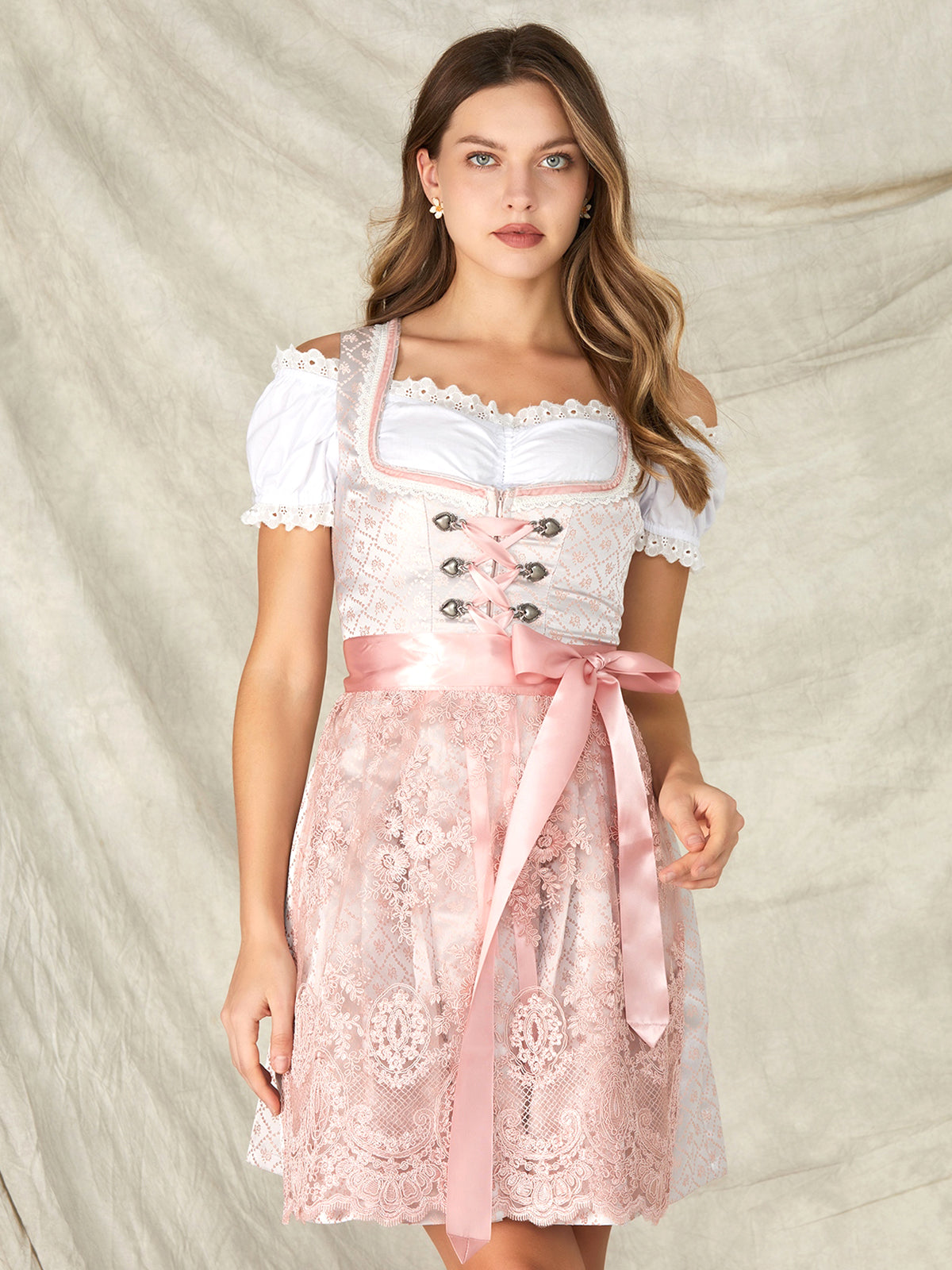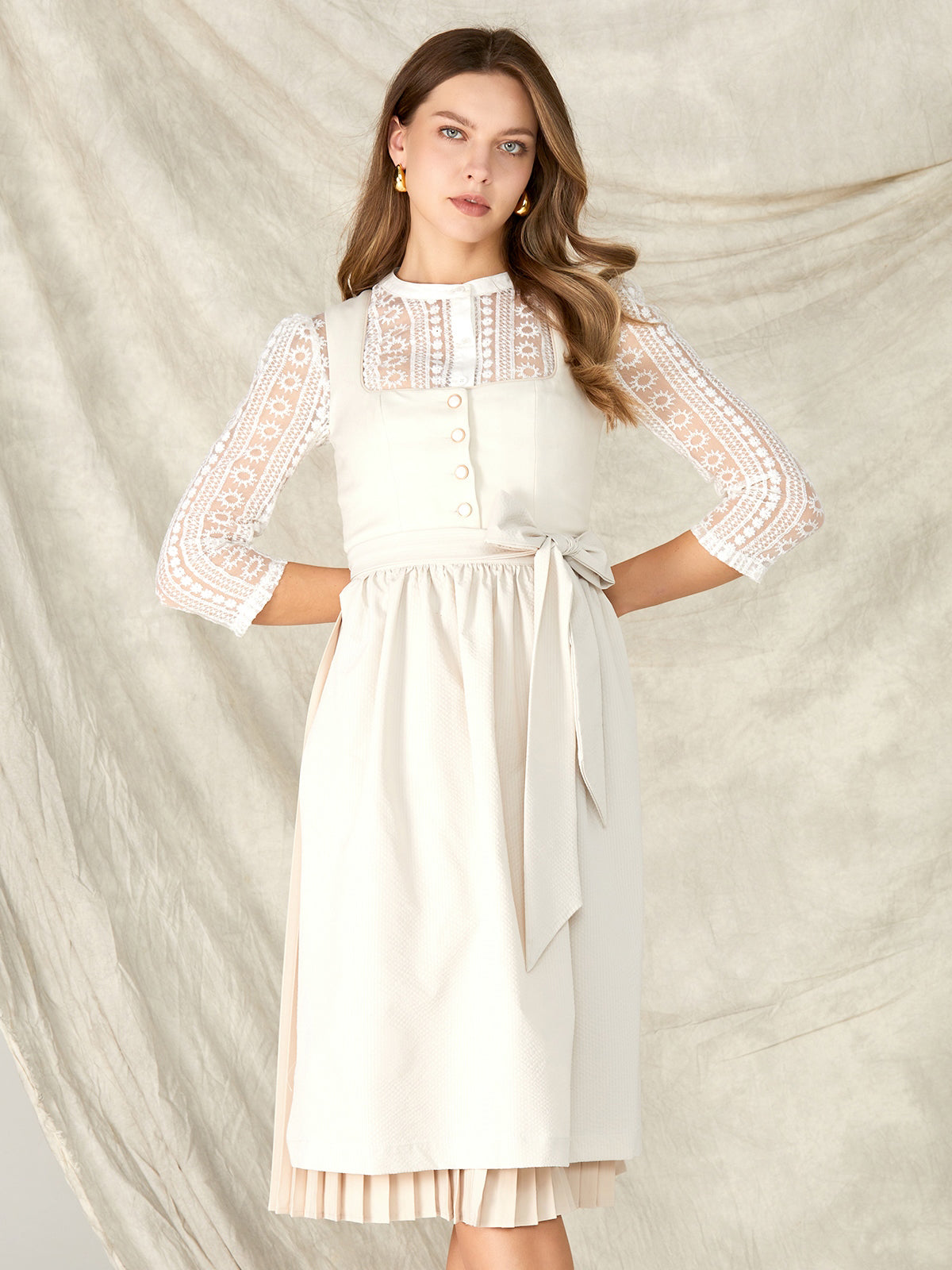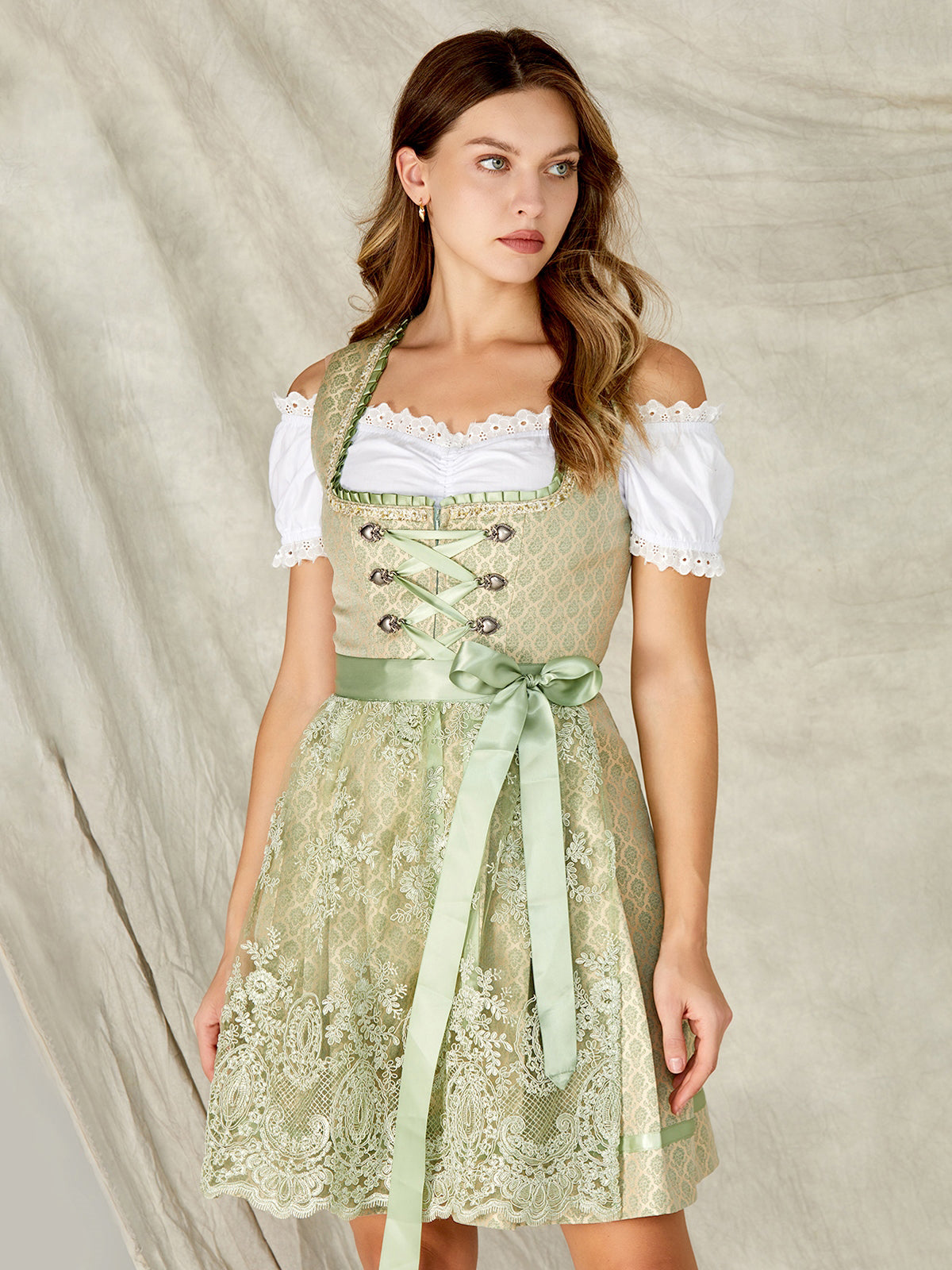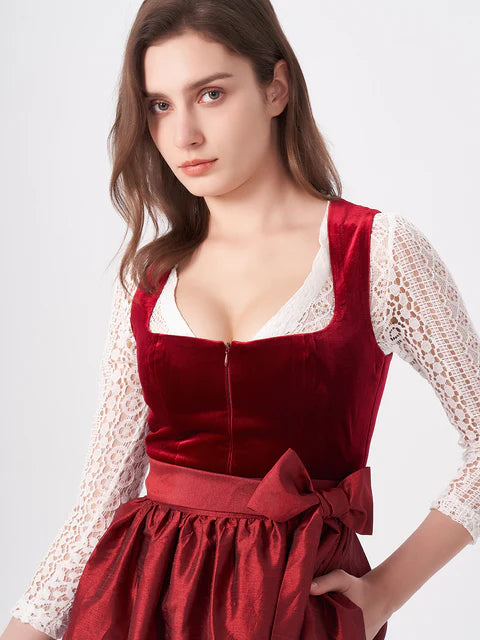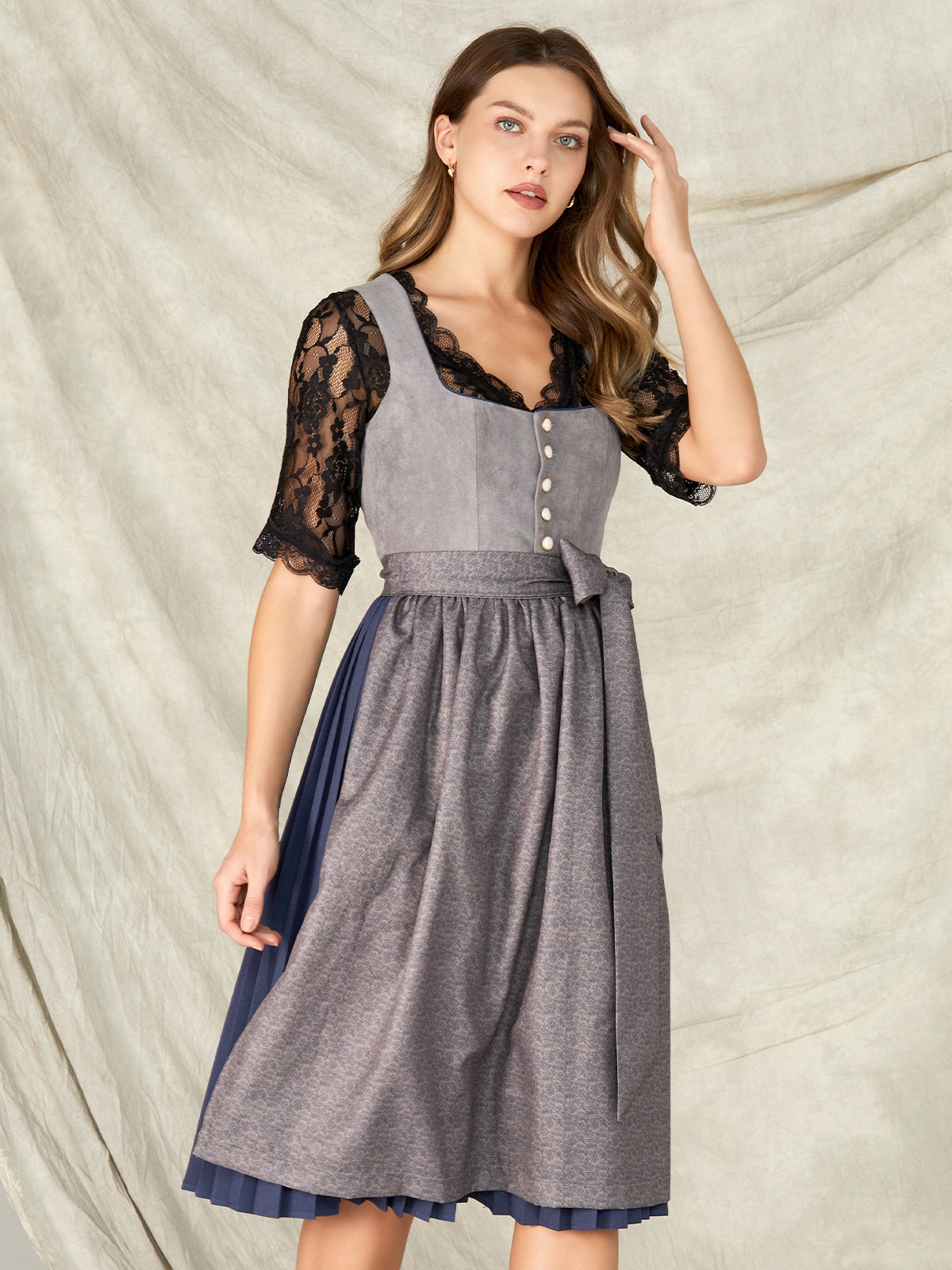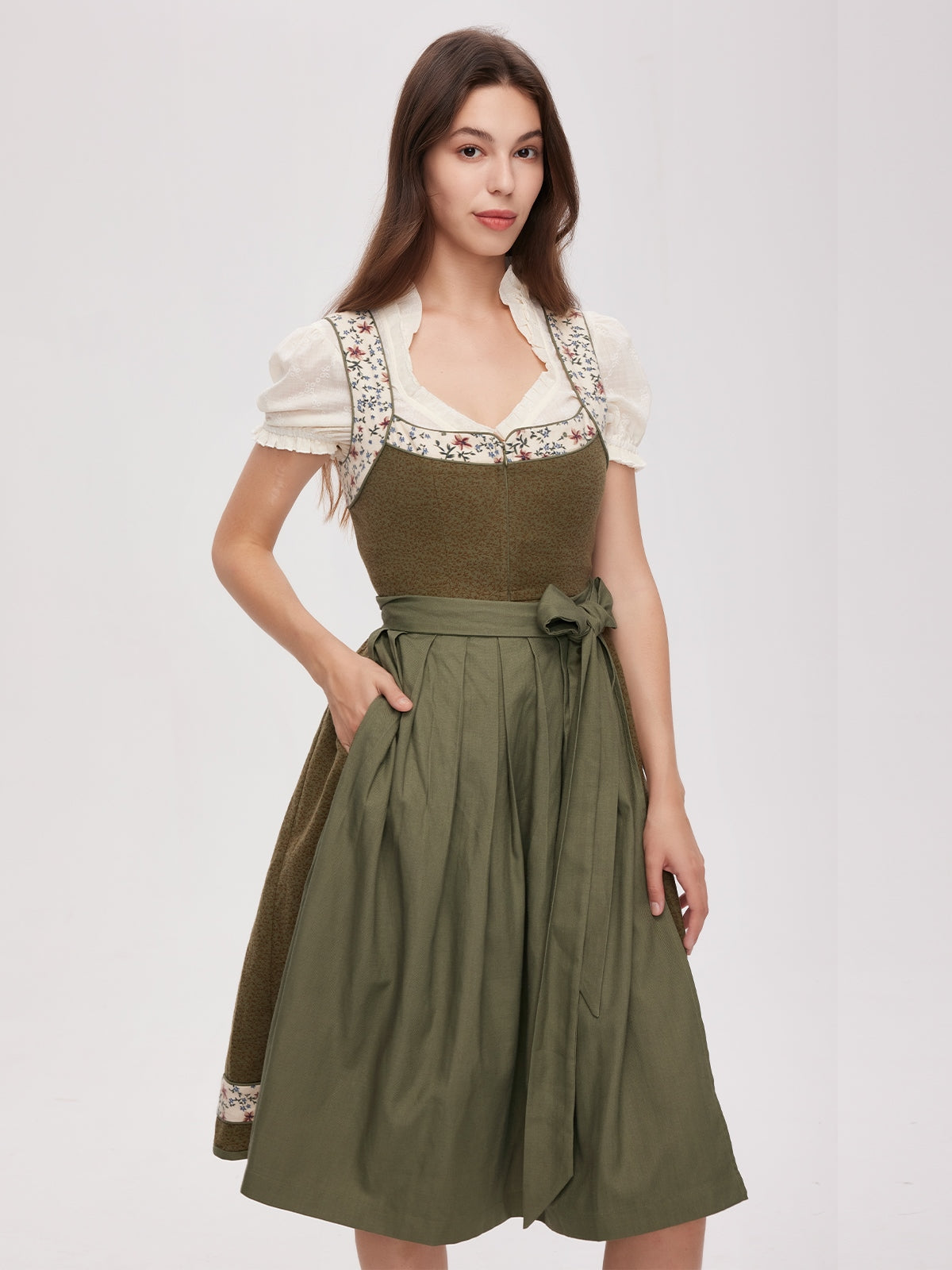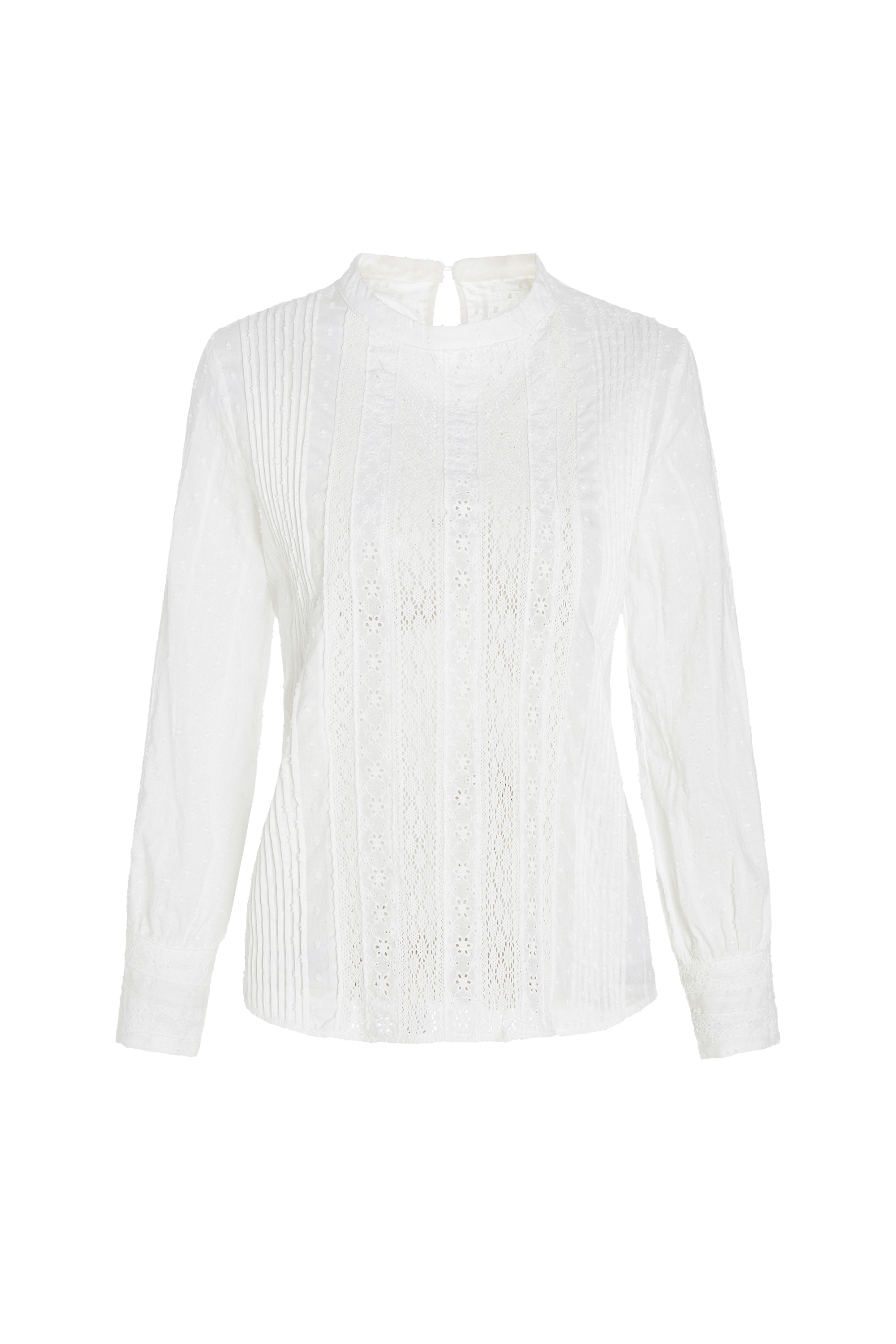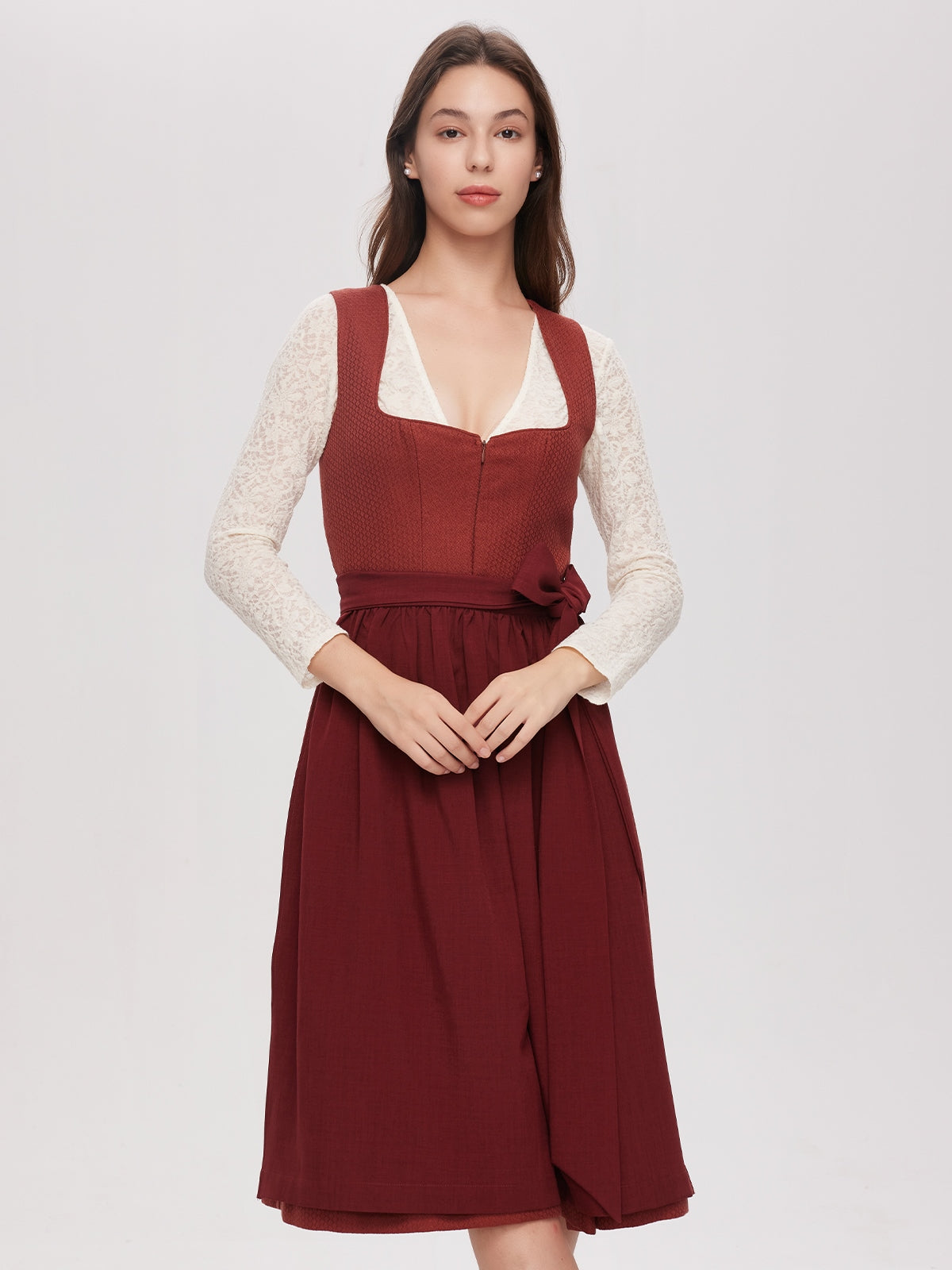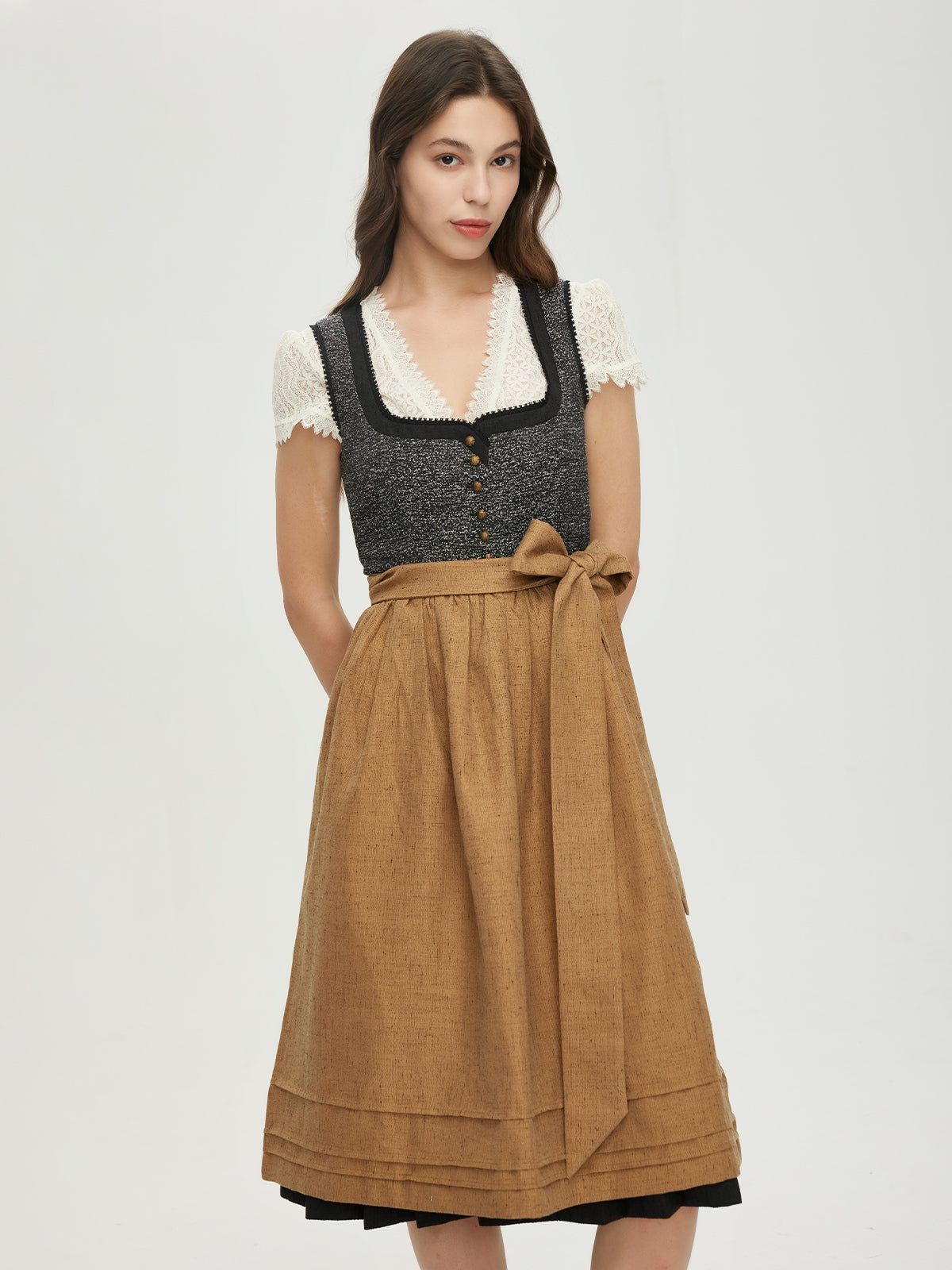Cart
0
I. Introduction
Dirndls are not just items of clothing, but a piece of culture and tradition. In this article, we'll explore different styles of dirndls, specifically the "red velvet dirndl," the "zip-front dirndl," and the " suede dirndl ." We'll explore the history, characteristics, and significance of these dirndls and learn how they've found their place in today's fashion world.
II. The History of the Dirndl
In earlier times, the dirndl was the everyday traditional dress of women in rural areas. It was practical yet beautiful. Women wore it while working in the fields or at community festivals. Over the years, however, the dirndl has evolved and is now a popular garment for many occasions.
III. The dirndl red velvet
A. The Beauty of Red Velvet
The red velvet dirndl immediately catches the eye with its vibrant color. The red velvet exudes a warm and vibrant atmosphere. Maria, an avid dirndl wearer, says: "When I put on the red velvet dirndl, I immediately feel special. The color brings so much energy and makes me the center of attention at every event."
B. Features and details
-
Cut and design
- It often has a classic cut with a tight bodice that accentuates the wearer's figure. The skirt is usually wide and flowing, allowing for elegant movement.
- The lacing on the bodice is not only a decorative element, but can also be used to adjust the fit.
-
decorations
- The red and velvet dirndl often features beautiful embroidery or appliqués. These can be floral motifs, geometric shapes, or even traditional symbols.
- Glittering stones or pearls can be added as additional embellishments, giving the dirndl an elegant touch.
C. Occasions for which it is suitable
-
Festivals and celebrations
- It's perfect for folk festivals like Oktoberfest. It blends harmoniously into the cheerful atmosphere, standing alongside the beer steins and Bavarian specialties.
- The red velvet dirndl can also be a stylish choice for weddings or birthday parties. It adds color and festivity to the occasion.
-
Everyday life with a twist
- Some women also wear the red velvet dirndl in a modified form for everyday wear. For example, they can combine it with a denim jacket to create a casual yet distinctive look.
IV. The dirndl with front zipper
A. Practical innovation
The dirndl with a front zipper is a modern interpretation of the traditional dirndl. The front zipper not only offers practical advantages but also changes the look and wearability of the dirndl.
B. Advantages of the zipper
-
Easy to put on and take off
- Lisa says, "I love my dirndl with the front zipper because it's so quick and easy to put on and take off. I used to have trouble with all the buttons, but now it's much easier."
-
adaptability
- The zipper allows for a more precise fit. It can be easily opened or closed to optimize the dirndl's fit, especially when moving or sitting.
C. Design variations
-
Modern design with traditional elements
- Many dirndls with a front zipper combine modern fabrics and colors with traditional cuts and patterns, creating a unique look that reflects both modernity and tradition.
- For example, it might be a dirndl in a simple gray with a contrasting zipper in a bright color like green or blue. The embroidery on the skirt or bodice might feature traditional Bavarian motifs, while the overall design appears very contemporary.
-
Experimental Styles
- Some designers go even further, creating experimental styles with the front-zip dirndl . They use unusual material combinations like leather and lace, or design the dirndl in an asymmetrical shape. These unusual dirndls attract the attention of fashion-conscious women who like to try something new.
V. The suede dirndl
A. The natural nature of suede
The suede dirndl has a special appeal, created by the suede material. It conveys a sense of robustness and closeness to nature.
B. Properties of suede
-
durability
- Suede is very robust and durable. A suede dirndl can be worn for many years and retains its quality. Anna says: "My suede dirndl is my favorite because it still looks so beautiful, even though I've worn it so many times. The material is simply incredibly durable."
-
comfort
- It's comfortable to wear because it conforms to the body and has a soft feel. Unlike some synthetic materials, suede breathes better, ensuring a comfortable fit, even when worn for extended periods.
-
Unique look
- The characteristic appearance of suede, with its natural structure and grain, makes each suede dirndl unique. Color variations range from soft brown and beige tones to darker shades like chocolate brown or black, offering a wide range of styling options.
C. Styling options with the suede dirndl
-
Rustic look for rural celebrations
- For a traditional country festival, the suede dirndl can be paired with a simple white blouse top and brown leather boots. A flower headband or a traditional necklace perfectly complements the look and conveys an authentic Bavarian flair.
-
Noble appearance on special occasions
- With an elegant silk top and high heels, the suede dirndl can be transformed into a glamorous outfit for special occasions such as an evening event or an opera performance. A fur bolero or a beautiful cardigan can add extra warmth and style.
VI. The timeline of dirndl development
Earlier
- The dirndl was primarily a practical traditional dress for women in rural areas. It was made of simple fabrics such as linen or cotton and had a rather plain cut. The colors were usually muted, and the decorations were limited to simple embroidery or buttons.
Mid-20th century
- With increasing industrialization and the spread of fashion ideas, the dirndl began to change. New fabrics such as velvet and synthetic materials were introduced. The cuts became more elegant and the designs more diverse. Dirndls also became popular outside of rural areas and were worn at urban festivals and events.
Today
- Today, there is a huge variety of dirndls. From traditional models to modern interpretations like the dirndl with a zipper at the front or made from unusual materials like suede. Dirndls are not only a part of Bavarian culture but have also gained international recognition. Women all over the world wear dirndls for various occasions and combine them creatively with other garments and accessories.
VII. Conflicts and challenges in the dirndl world
A. The question of authenticity
- A growing concern is the question of dirndl authenticity. With their growing popularity, there are many cheap imitations on the market that do not reflect the quality and traditional characteristics of the real dirndl.
- Kathrin, an experienced dirndl collector, is annoyed by this: "It's a shame that there are so many fake dirndls. People buy them because they're cheap, but they don't understand that they're compromising tradition and quality. A genuine dirndl has a history and a special meaning that you don't experience with these cheap copies."
B. The balance between tradition and modernity
- Another dilemma is the balance between preserving the traditional elements of the dirndl and adapting to modern fashion. Some people fear that modern interpretations, such as dirndls with zippers down the front or made of unusual materials, will corrupt the tradition.
- Peter, a traditional costume retailer, says: "We must strive to preserve tradition, but we should also be open to new ideas. The modern world is changing rapidly, and we must adapt to keep the dirndl relevant. But we should be careful not to lose the essence of tradition."
C. The environmental impact of materials and production
- The production of dirndls, especially those made from certain materials like suede, can cause environmental problems. Leather production requires a lot of water and energy and can lead to environmental pollution.
- Environmental activist Clara demands: "We should pay more attention to the environmental sustainability of dirndl production. There are alternatives to suede, such as vegan leather or recycled materials. We should explore these options to protect the environment while still producing beautiful dirndls."
VIII. Solution and hope for the future of the Dirndl
A. Quality assurance and education
- To solve the problem of counterfeit dirndls, manufacturers and retailers should pay more attention to quality assurance. Clear standards for dirndl production should be established, and customers should be informed about the characteristics and quality of authentic dirndls.
- Educational programs and information campaigns can be conducted to educate people about the importance of tradition and the quality of dirndls. This will help customers make better choices and recognize the true value of dirndls.
B. Innovative designs that respect tradition
- Designers should continue to develop innovative designs that respect the tradition of the dirndl while meeting the needs of modern customers. They can combine traditional elements with modern materials and techniques to create unique and high-quality dirndls.
- Through collaboration between traditional costume manufacturers and modern designers, new ideas can emerge that will take the dirndl into the future. This successfully maintains the balance between tradition and modernity.
C. Environmentally friendly production and material selection
- The industry should strive to develop more environmentally friendly production methods and focus on alternative materials. Vegan leather, recycled fabrics, or sustainably produced natural materials could be one solution.
- Companies can also invest in research and development to find new materials that don't compromise the quality and appearance of dirndls, but are more environmentally friendly. This way, dirndl production can become more sustainable and protect the environment.
IX. Summary
Dirndls in various styles, such as the red velvet dirndl , the front-zip dirndl, and the suede dirndl, have their own charm and significance. They combine tradition with modernity and offer women a variety of ways to dress stylishly. Despite the challenges regarding authenticity, tradition, and the environment, appropriate measures can be taken to secure the future of the dirndl. We should appreciate the beauty and significance of these traditional garments and carry them forward into the future so that they can continue to bring joy to future generations.

